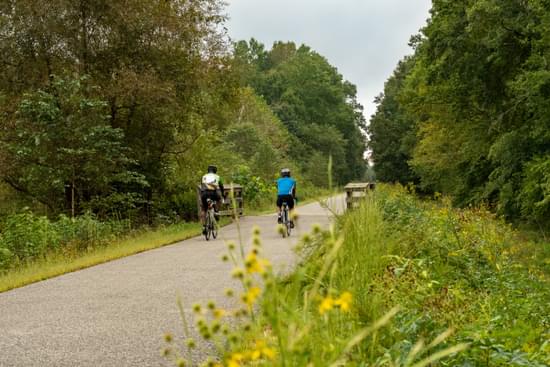




Strategies for Building Trail Networks
Rails to Trails Conservancy's TrailNation™ Playbook brings the decades of experience building trail networks across the country to a resource of case studies, best practices and tools for trail network development on a local and national level.
by Rails to Trails Conservancy

With more than 24,000 miles of rail-trails in the nation, RTC's TrailNation initiative curates case studies, best practices and tools to accelerate trail network development nationwide. Explore each section for lessons learned that can support trail planners, municipalities, states and regions working to advance trail network projects.
posted Apr 17, 2024
This report summarizes guidance and best practices to create safer bicycle facilities and connect them into networks that allow more people to safely bike to more places within and throughout communities.
Making Transportation Planning Applicable in Tribal Communities Research Study: Final Report
posted Dec 20, 2023
The Federal Highway Administration’s (FHWA) Office of Tribal Transportation (OTT) planning staff have observed two challenges in Tribal transportation planning: (1) that existing planning analysis tools do not always align with Tribal community context and needs and (2) it is not always clear what benefits planning provides to transportation project selection and delivery in Tribal communities.
Tribal Development of Trails and Other Dedicated Pedestrian and Bicycle Infrastructure
posted Dec 19, 2023
This white paper provides information and resources for Tribes, Tribal trails and active transportation advocates, and agencies that may partner with Tribes on trail projects including Federal and State agencies, MPOs, county and local governments, and community organizations.
Small Town and Rural Multimodal Networks
posted Nov 1, 2023
The Small Town and Rural Multimodal Networks report is a resource and idea book intended to help small towns and rural communities support safe, accessible, comfortable, and active travel for people of all ages and abilities.
523 views • posted 12/13/2023